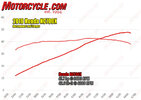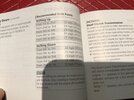makepies
New Member
Hello folks, newbie here. Returning to motorcycling after 12+ years off.
I would like to hear from owners of the manual model how they find the gearing / gear ratios. You see I'm considering plunking down for a 2016 w/ low mileage (~2000) but I haven't ridden one yet. I'm finding that a LOT of bikes are geared low and want you to ride with high revs. I would *prefer* though I haven't found it yet to get a little more torque down low (say <3000rpm) and keep it all relaxed but, due to the higher torque, separate the gears a little more so you have a little more usable power range within each gear so you don't have to shift as often.
I've read a lot about the low revs and high low-RPM torque on these bikes but no mention of how they are geared - short or tall - except for a few references to treating 6th as an overdrive gear.
So how are these geared? Thanks ...
I would like to hear from owners of the manual model how they find the gearing / gear ratios. You see I'm considering plunking down for a 2016 w/ low mileage (~2000) but I haven't ridden one yet. I'm finding that a LOT of bikes are geared low and want you to ride with high revs. I would *prefer* though I haven't found it yet to get a little more torque down low (say <3000rpm) and keep it all relaxed but, due to the higher torque, separate the gears a little more so you have a little more usable power range within each gear so you don't have to shift as often.
I've read a lot about the low revs and high low-RPM torque on these bikes but no mention of how they are geared - short or tall - except for a few references to treating 6th as an overdrive gear.
So how are these geared? Thanks ...




